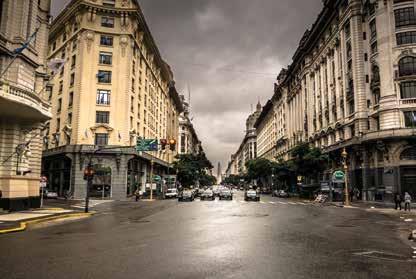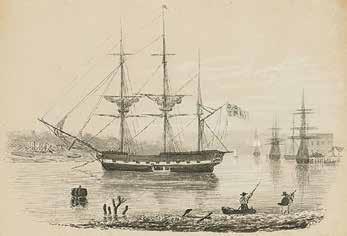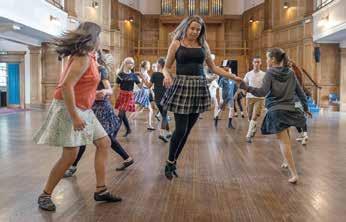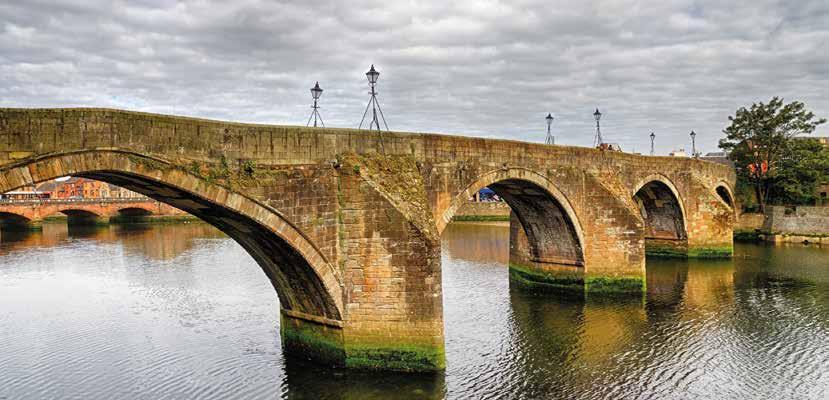
3 minute read
Scots in Argentina
Photo: Buenos Aires city centre
Marcela Galve is the Secretary of the BASC (Buenos Aires Scottish Country Dancers). To many people it may seem strange that our dancing is popular with Argentinians, but to many Scots over 100 years ago, particularly from the Highlands and Islands, ‘the Argentine’ was a place which offered work, prospects, and a future.
Scottish roots in Argentina go back to 8 August 1825, when the sailing ship Symmetry arrived on the coast of Buenos Aires carrying the first colonists from Leith. Commanded by Captain Samuel Smith, the Symmetry brought 45 couples, 42 single men, 14 single women and 79 children to a rich agricultural area in the province of Buenos Aires called Monte Grande, an area under the patronage of John and William Parish Robertson. In Records of the Scottish Settlers in the River Plate and their Churches its author, James Dodds, relates that the first Scottish settlers were very much amused by landing from boats onto queer-looking horse carts with large wooden axles and enormous wheels. Some of the immigrants settled in Patagonia; most worked in agriculture. During the voyage, an anonymous passenger wrote a poem: Tam O’Stirling which was published in the book: From Caledonia to the Pampas by William Grierson. Grierson is a well known surname in Argentina. Cecilia Grierson, granddaughter of William Grierson was the first female medical doctor born in this country.
In the late 1800s and the early part of the 20th century adverts appeared in Scottish newspapers for shepherds to work in South America. Some stayed for a while then went back home; some settled and married locally. The settlers, mainly Presbyterian, soon founded their own churches. Apart from St Andrew’s Presbyterian Church in Buenos Aires, dating back to 1829, there are records of ten Presbyterian churches in other parts of the country.
Argentina owes its Football Association to a graduate of Edinburgh University from the Gorbals in Glasgow, Alexander Watson Hutton, a teacher and sportsman who believed that sport was a vital element in education and good health. Football is the most popular sport in Argentina so the fact that a Scot founded the AFA,

The SS Symmetry on which the Scots sailed
Argentine Football Association, is very important to us. Hutton also founded one of the most prestigious schools, the Buenos Aires English High School in the Belgrano neighbourhood. There are many bilingual schools in Argentina where Scottish traditions are taught through music and dancing. In most of these schools highland dancing is taught. Scottish country dances are taught in quite a few – especially in primary schools.
Buenos Aires has four pipe bands. They raise funds for charitable causes through the promotion of Scottish culture: the St. Andrew’s Society of the River Plate founded in 1888; a country dance demonstration team; and Fir Chis, a Gaelic Choir (Ceòlraidh) – the only choir in Latin America singing in Scottish Gaelic.
Argentina is also the only country in Latin America with a qualified Scottish country dance teacher. BASC Dancers, founded in 2005, is an affiliated group with weekly classes, workshops, and ceilidhs. Throughout the year Buenos Aires celebrates Scotland in many different ways. Every January we gather for a Ceilidh on Burns’ Night, when in spite of the Summer temperatures (95°F), we address the Haggis and eat it; we dance Scottish country dances and some dancers entertain the audience with highland dancing as well. March marks the start of the ‘Buenos Aires Celebra’, a series of events organised by the City to celebrate the diaspora of Eastern and Western communities that have contributed to make up Argentina. March is the time to celebrate Scotland when one of the most important avenues in Buenos Aires is closed to traffic and people gather around a stage to hear the pipes and see Scottish dancing. There are stalls that sell neeps and tatties, whisky and Scottish crafts. There are also a couple of ‘Caledonians’ during winter organised by the pipe bands and in October BASCDancers celebrates its Scottish Hallowe’en party with hands round danced withershins and ghosts in the sets. The year is crowned with a Scottish country dance Christmas party in the south of Buenos Aires, Adrogué, a city very near Monte Grande, the area of the first Scottish settlers. Argentina takes pride in having the largest Scottish community outside the English-speaking world, with an estimated 100,000 people claiming Scottish ancestry, and, as you can see, their legacy is still celebrated to this day.










